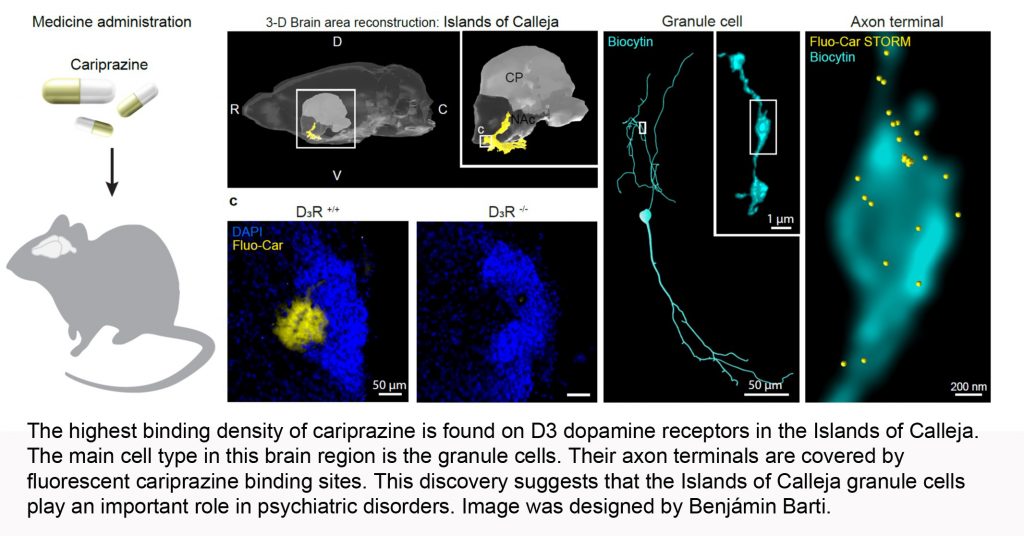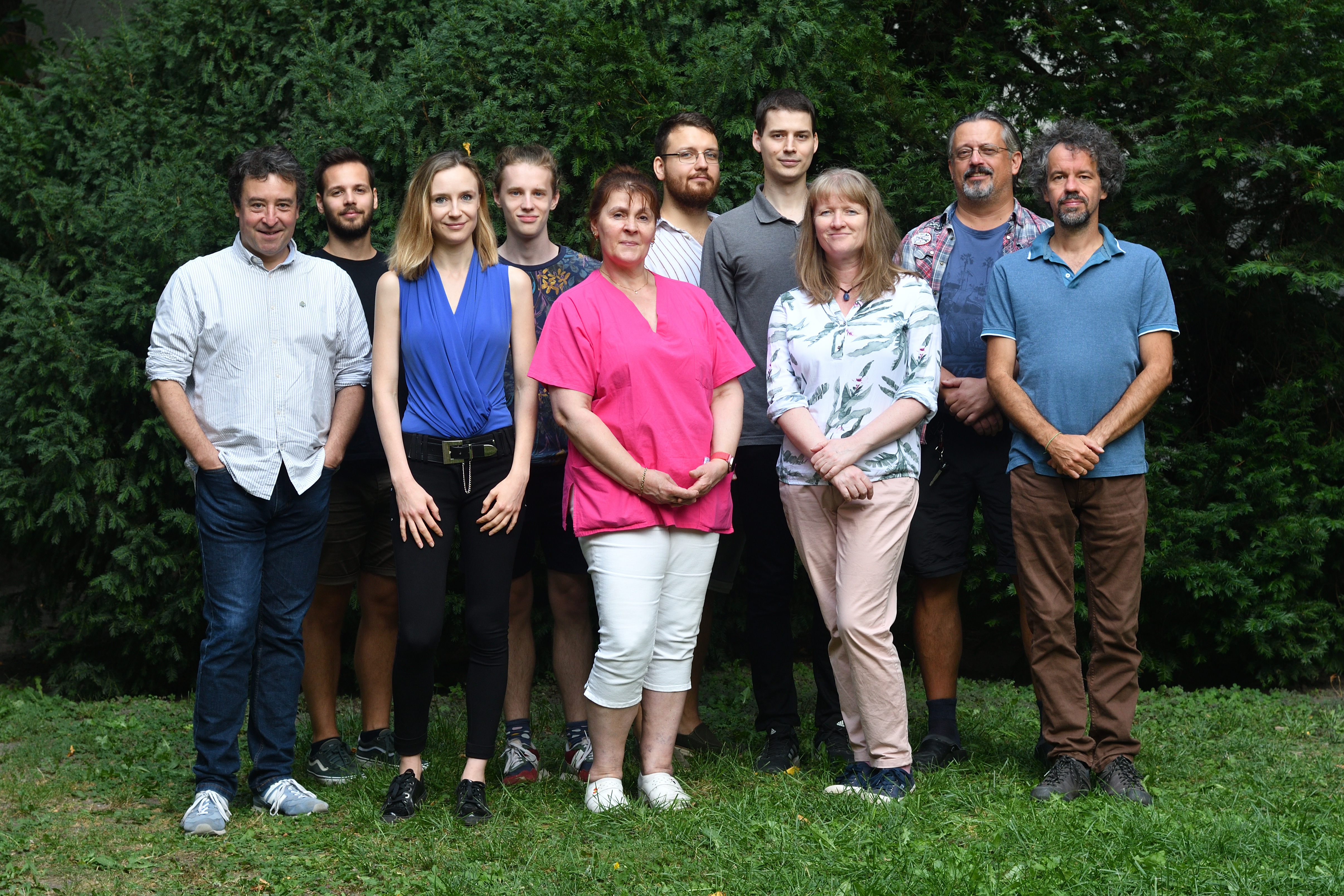Our new paper in Nature Communications
The study introduces PharmacoSTORM a novel method based on fluorescent small molecule pharmacoprobes (receptor ligands and enzyme inhibitors) and STORM super-resolution imaging.
By using the logic of autoradiography and combining its quantitative strengths with the power of immunostaining for the visualization of cellular and subcellular profiles in intact brain circuits, PharmacoSTORM makes nanoscale pharmacological measurements possible in a cell-type- and subcellular compartment-specific manner. We demonstrated broad applicability of PharmacoSTORM for GPCRs, ion channels and enzymes.
Most importantly, PharmacoSTORM revealed that the major binding sites of cariprazine, a novel antipsychotic and antidepressant are the D3 dopamine receptors located on the axons of the Islands of Calleja granule cells. The physiological role and the neuropsychiatric significance of the Islands of Calleja are not well understood. Therefore, our new study has important translational impact by postulating that a major mechanism of action of cariprazine treatment is the regulation of the dopaminergic control of the outputs of the Islands of Calleja granule cells via D3 receptor binding.

The first author of the study is Susanne Prokop, an exceptional graduate student in our lab. Several other former and current lab members contributed to this work including Benjámin Barti, Márton Vámosi, Miklós Zöldi, László Barna, Gabriella Urbán and Barna Dudok. We are very grateful for the valuable contribution of our wonderful collaborators at the Keserű lab, at the van der Stelt lab,
at the Hunyady lab and Gian Marco Leggio.






